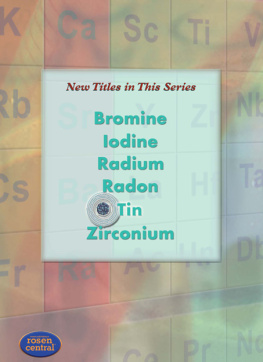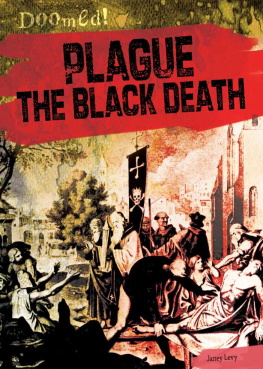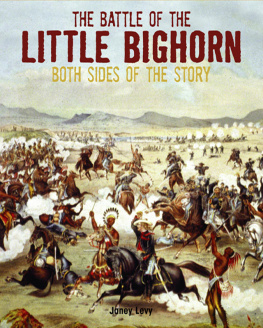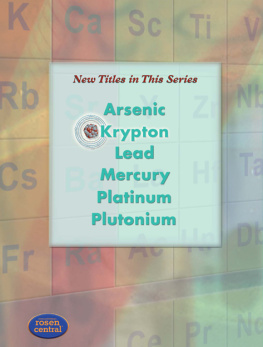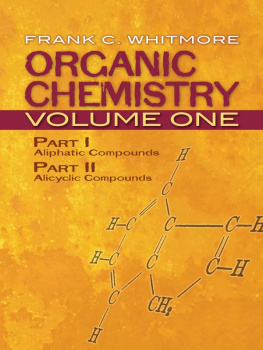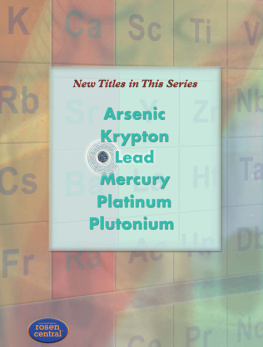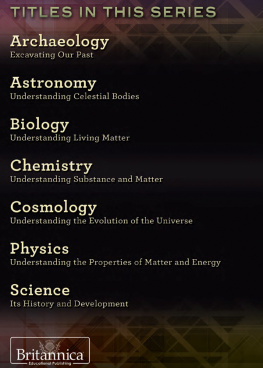Page List

Published in 2009 by The Rosen Publishing Group, Inc.
29 East 21st Street, New York, NY 10010
Copyright 2009 by The Rosen Publishing Group, Inc.
First Edition
All rights reserved. No part of this book may be reproduced in any form without permission in writing from the publisher, except by a reviewer.
Library of Congress Cataloging-in-Publication Data
Levy, Janey.
Tin / Janey Levy.
p. cm.(Understanding the elements of the periodic table)
Includes bibliographical references and index.
ISBN-13: 978-1-4358-5073-6 (library binding)
1. Tin. 2. Periodic lawTables. I. Title.
QD181.S7L48 2009
546.686dc22
2008019949
Manufactured in the United States of America
On the cover: Tins square on the periodic table of elements. Inset: The atomic structure of tin.
Contents
T he term chemical element may first make you think about your science classroom and laboratory experiments. The elements certainly play a role there. However, their importance extends far beyond classrooms and laboratories. Did you know the elements have actually affected history?
Chemical elements have played a determining role in human events many times over the centuries. Metals have been especially important. You probably know how the 1848 discovery of gold (Au) in California caused thousands of people from around the world to rush there in hopes of getting rich. But its not only precious metals such as gold that have affected history. One of the reasons the ancient Romans invaded Britain in 43 CE was for the tin found there. The Romans used tin to make vital alloys, including pewter and bronze. They used pewter for items such as official seals and eating utensils. Bronze was even more valuable. It was used for many items, including decorative ornaments, kitchen and eating utensils, andmost importantweapons.
Tin continues to be important in modern society and is used in a wide variety of ways. Its still used in bronze and pewter, as well as a number of other alloys. Its used in agents for killing crop pests, certain kinds of paint, car parts, food containers, dental fillings, and a whole host of everyday items. Its also used in the electronic devices that are so essential to life today, including computers, cell phones, microwave ovens, and even video games and portable music players! It would be almost impossible for you to go through an entire day without encountering many things that contain tin. Life as we know it would be very different without this metallic element.
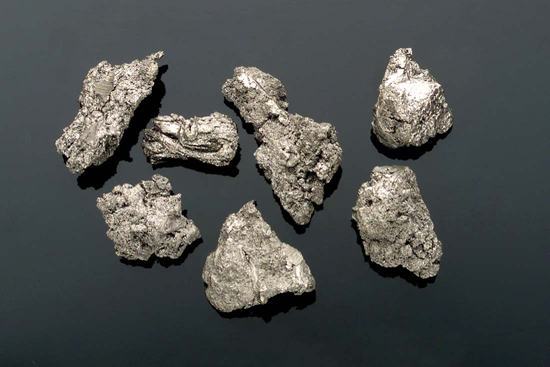
Tin is a silvery gray, shiny metal. It rarely occurs that way in nature, however. Its usually found in ores, the most common of which is cassiterite, or tin oxide (SnO2).
T ins chemical symbol is Sn. If the name and symbol dont seem to match, its because they come from different languages. Tin was the name used by the Anglo-Saxons, the people who took over Britain in the 400s and 500s CE. The symbol comes from the Latin name for the metal, stannum, which was used by the Romans.
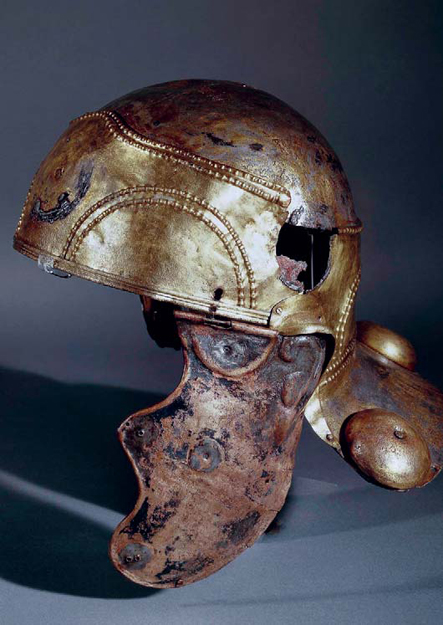
The Romans sometimes used tin for ornamental purposes, even on practical objects such as battle helmets. Silvery tin and golden bronze once decorated this first-century CE helmet.
Tin is one of the oldest metals known to humans. Its been used for at least 5,500 years. In ancient times, it was employed primarily in three alloys. Bronze, made of tin and copper (Cu), was used to fashion jewelry, art, tools, utensils, and weapons because it is much harder than tin or copper alone. Solder, made of tin and lead (Pb), has a low melting point and is used to join metal surfaces. It was employed in metal pots, tools, and Roman plumbing. Pewter, made of tin and small amounts of other elements, was used for Roman government seals and some eating utensils.
Today, tin is still used to make bronze, solder, and pewter, as well as newer alloys. The alloys and other forms of tin are employed in the manufacture of a range of items. An incomplete list includes tinplate, gunmetal, bearings, organ pipes, bells, plastics, marine paint, and biocides. Tin is even used in a special glassmaking process!
The History of Tin
We dont know who discovered tin, or where and when it was first used. However, surviving evidence indicates it was widely used in alloys in the ancient world. The earliest written records of the Mediterranean region mention tin. Archaeologists have discovered thousands of ancient bronze objects.
Bronze was so important in ancient times that a whole period of history is named for it. Although the dates differed among regions, the Bronze Age lasted from about 3500 BCE to about 1100 BCE. Weapons, armor, pots, pans, plates, drinking vessels, bells, jewelry, art, decorative articles, religious items, and other bronze objects have been found in Iraq, Turkey, Greece, Egypt, India, and China. The Phoenicians of ancient Lebanon are known to have crafted tin containers for use in the production of their renowned purple dye (called Tyrian purple). When Mediterranean tin supplies (primarily from the Taurus Mountains in Turkey) ran low, the Phoenicians searched for other sources. They discovered the tin islands, the location of which they kept secret. Today, it is believed the tin islands were northwestern Spain and Cornwall (part of the British Isles).
Other tin alloys were used in ancient times as well. The Romans used solder to join the lead pipes in their plumbing systems. They also fashioned objects of pewter, as did the Greeks, Egyptians, and Chinese.
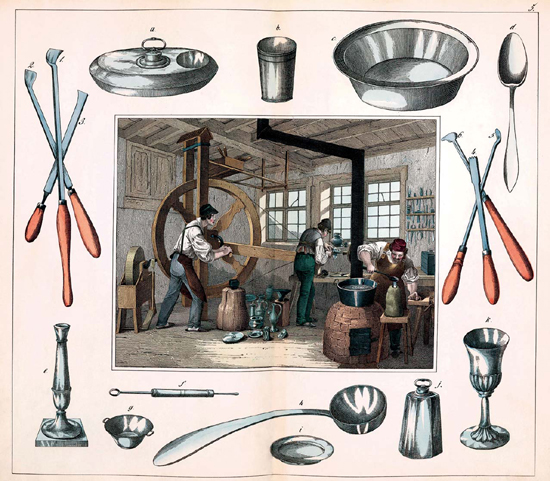
This picture from a book published in the Netherlands in 1849 gives us a glimpse into a nineteenth-century tinsmith or pewterers workshop. Pictures of objects produced in the workshop decorate the border.
Europeans used pewter for kitchen and household utensils until the mid-1800s. They also employed tin to plate other metals that were used to make household utensils, such as kettles and basins. In addition, they crafted pots, pans, plates, cups, buttons, coins, and organ pipes from tin. Tin was even hammered into thin sheets to make tin foil, which was used for centuries before aluminum (Al) foil replaced it in the early 1900s.
From the mid-1800s to the early 1900s, tinplate was used to make decorative tin ceilings. Tinplate is a sheet of iron (Fe) or steel coated with a thin layer of tin. The iron or steel is stronger and cheaper than tin, but the tin resists corrosion (rusting) better than iron or steel. It was stamped with complex patterns based on the carved and molded plaster ceilings found in lavish European residences.
The 1800s were also a time when scientists learned more about this prized element. Around 1830, Swedish chemist Jns Jakob Berzelius (17791848) conducted the first careful attempt to determine tins atomic weight. He found it to be 117.64 (expressed as atomic mass units, or amu). French chemist Jean-Baptiste Dumas (18001884) more accurately measured tins atomic weight a few years later, when he determined it to be 118.06. Dumass measurement was very close to tins currently accepted average atomic weight of 118.710.

